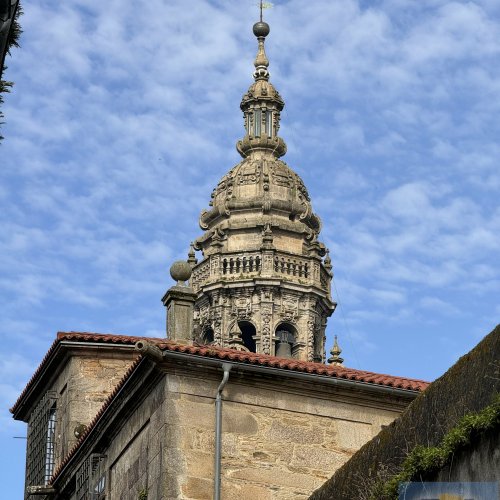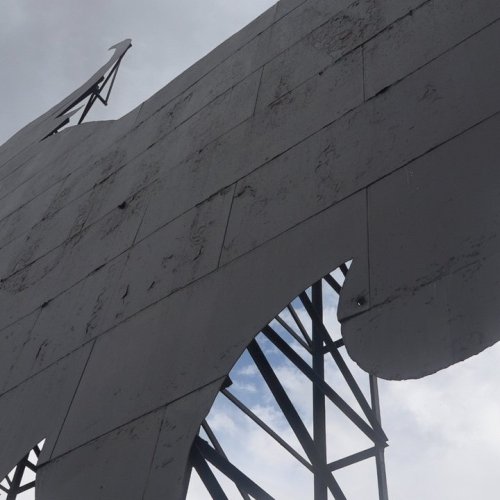-
Get your Camino Frances Guidebook here.
-
For 2024 Pilgrims: €50,- donation = 1 year with no ads on the forum + 90% off any 2024 Guide. More here.
(Discount code sent to you by Private Message after your donation) -
 ⚠️ Emergency contact in Spain - Dial 112 and AlertCops app. More on this here.
⚠️ Emergency contact in Spain - Dial 112 and AlertCops app. More on this here.
Search 69,459 Camino Questions
You are using an out of date browser. It may not display this or other websites correctly.
You should upgrade or use an alternative browser.
You should upgrade or use an alternative browser.
LIVE from the Camino I just saw Martin Sheen!!!
- Thread starter tohams
- Start date
-
- Tags
- the way movie
3rd Edition. More content, training & pack guides avoid common mistakes, bed bugs etc
He´s making a movie with his son Emilio Estevez. Other pilgrims have spotted them from time to time along the camino as well.
Kelly
Kelly
Senyor Pirotecnic
Member
- Time of past OR future Camino
- Camino Frances 2008, half Via del Plata 2011, Camino Fisterra 2011, Camino Aragones 2013.
New Original Camino Gear Designed Especially with The Modern Peregrino In Mind!
- Time of past OR future Camino
- 2006 to date: Over 21 Caminos. See signature line
Yup.. we ran into them and the film crew also.
The mochillas are all nice and clean... everybody´s shoes are new... the pilgrims look fresh, and their credentials have been stamped in places 100 K apart! Hahahaha!
Sheen wanted to talk to a ¨real¨pilgrim and I think Kanga, from this forum, spoke with him-them for a moment.
The mochillas are all nice and clean... everybody´s shoes are new... the pilgrims look fresh, and their credentials have been stamped in places 100 K apart! Hahahaha!
Sheen wanted to talk to a ¨real¨pilgrim and I think Kanga, from this forum, spoke with him-them for a moment.
Priscillian
Veteran Member
- Time of past OR future Camino
- Frances 1999, Aragones 2000, Desde Le Puy 2002, Portuguese 2009, hoping RDLP 2014
If anyone else sees Martin Sheen could you try to find out his agent's address for me? I have sent two copies of Pilgrimage to Heresy and Peregrinos de la Herejía and both have come back. He must have changed agents. Many thanks,
Tracy Saunders
http://www.pilgrimagetoheresy.com
Tracy Saunders
http://www.pilgrimagetoheresy.com
Join our full-service guided tour and let us convert you into a Pampered Pilgrim!
Que Sera, Sera.
sillydoll
Veteran Member
- Time of past OR future Camino
- 2002 CF: 2004 from Paris: 2006 VF: 2007 CF: 2009 Aragones, Ingles, Finisterre: 2011 X 2 on CF: 2013 'Caracoles': 2014 CF and Ingles 'Caracoles":2015 Logrono-Burgos (Hospitalero San Anton): 2016 La Douay to Aosta/San Gimignano to Rome:
Whether its a good or a bad thing el camino may eventually reach its former popularity.
When they have 11 albergues in Estella, 32 in Burgos, 4 at Villafranca de Montes de Oca (a register dating1594 at a hospice at Villafranca de Montes de Oca recorded 16,767 pilgrims that year, over 200 on some days) 21 in Astorga, 14 at Carrion de los Condes and 7 in Castrojeriz then we'll know it has almost returned to 'normal'.
Some things have changed though, Terradillos de los Templarios and neighbouring Moratinos were among the few pueblos that did not provide a hospice for pilgrims. Today there are 2 albergues in Terradillos and Rebekah's Peaceable Kingdon in Moratinos!
Back to the past!
When they have 11 albergues in Estella, 32 in Burgos, 4 at Villafranca de Montes de Oca (a register dating1594 at a hospice at Villafranca de Montes de Oca recorded 16,767 pilgrims that year, over 200 on some days) 21 in Astorga, 14 at Carrion de los Condes and 7 in Castrojeriz then we'll know it has almost returned to 'normal'.
Some things have changed though, Terradillos de los Templarios and neighbouring Moratinos were among the few pueblos that did not provide a hospice for pilgrims. Today there are 2 albergues in Terradillos and Rebekah's Peaceable Kingdon in Moratinos!
Back to the past!
Very light, comfortable and compressible poncho. Specially designed for protection against water for any activity.
Our Atmospheric H30 poncho offers lightness and waterproofness. Easily compressible and made with our Waterproof fabric, its heat-sealed interior seams guarantee its waterproofness. Includes carrying bag.
€60,-
Our Atmospheric H30 poncho offers lightness and waterproofness. Easily compressible and made with our Waterproof fabric, its heat-sealed interior seams guarantee its waterproofness. Includes carrying bag.
€60,-
- Time of past OR future Camino
- Many, various, and continuing.
I think a lot of those numerous pilgrim hospitals were tiny, 2 or 6 or 10-bed affairs run by confraternities or some such. None of these great airplane hangars we have now.
Interestingly enough, a good number of the medieval establishments were specialized, and catered to only particular types of pilgrims. (I don´t remember where I read this but it was not long ago!) Members of particular crafts guilds or religious orders stayed at hostels run by their brethren, Aragonese or Parisians or Pisans stayed with their countrymen, poor pilgrims stayed with the Franciscans and rich people stayed with the Benedictines, for instance.
The 13-bed hospital at San Nicholas del Real Camino was open for 300 years, but only to travelers with leprosy!
As for Moratinos, it has never had any facility for pilgrims anytime in its history. Maybe because it was founded by Moors, who had their own Hajj to a place in the opposite direction. Or maybe the big hustle in Terradillos scooped up all the tired pilgrims, leaving only the lepers.
And Martin Sheen. He didn´t stop here, either.
Interestingly enough, a good number of the medieval establishments were specialized, and catered to only particular types of pilgrims. (I don´t remember where I read this but it was not long ago!) Members of particular crafts guilds or religious orders stayed at hostels run by their brethren, Aragonese or Parisians or Pisans stayed with their countrymen, poor pilgrims stayed with the Franciscans and rich people stayed with the Benedictines, for instance.
The 13-bed hospital at San Nicholas del Real Camino was open for 300 years, but only to travelers with leprosy!
As for Moratinos, it has never had any facility for pilgrims anytime in its history. Maybe because it was founded by Moors, who had their own Hajj to a place in the opposite direction. Or maybe the big hustle in Terradillos scooped up all the tired pilgrims, leaving only the lepers.
And Martin Sheen. He didn´t stop here, either.
andy.d
Veteran Member
- Time of past OR future Camino
- Camino de Levante 2009
Camino Ingles (Coruna) 2011
Camino Ingles (Coruna) 2014
Pilgrims Way Winchester - Canterbury
Camino Ingles (Ferrol) 2015
Cistercian Way (Wales) 2016
There are some two bed albergues on the Camino Levante, and last autumn plenty of spare capacity in them. There are some very solitary routes if people want to walk them - from Valencia to Toledo last September, no one had seen another peregrino for weeks.
Andy
Andy
sillydoll
Veteran Member
- Time of past OR future Camino
- 2002 CF: 2004 from Paris: 2006 VF: 2007 CF: 2009 Aragones, Ingles, Finisterre: 2011 X 2 on CF: 2013 'Caracoles': 2014 CF and Ingles 'Caracoles":2015 Logrono-Burgos (Hospitalero San Anton): 2016 La Douay to Aosta/San Gimignano to Rome:
Reb, you are quite right. Many of the shelters catered for 12 - the number of the apostles - and there were some hospices that catered for the poor and for the ill. These were often attached to the hospice for pilgrims. (You can read more about these in 'Body & Soul: Hospitality through the ages on the Roads to Compostela' available from the CSJ Bookshop).
The hospice at Roncesvalles (some ruins can be seen around the field opposite the Basicilia) catered for large numbers of pilgrims. As late as the 17th-c, well into the decline of the pilgrimage, the Roncesvalles hospice was hosting 25, 000 pilgrims per year. The hospice in Pamplona and Burgos were huge as was one in Astorga and, of course, the hospice in Santiago which is now a parador.
Royalty and wealthy families sponsored the building of many hospices, even in remote areas, and some were enlarged over the centuries as pilgrim numbers grew. Just as they are today, some hospices were provided by Confraternities, some by the church or monastic orders and some were privately run.
"The practice of hospitality led to the founding of welfare institutions that attended to the spiritual, material and health needs of the pilgrims. According to their ecclesiastical, civil or popular origins, the centres can be classified as episcopal or cathedral hospitals, hospitals run by the military, monastic or royal orders, noble foundations, parish hospitals, and in the cities along the Way, hospitals run by guilds and religious brotherhoods. Especially important in this respect were the monasteries of Cluny and the military orders, especially the Knights Hospitaller." (Xacobeo.es)
You have made history by providing shelter to pilgrims in Moratinos and, maybe in the future, a date will be chronicled when the first shelter appeared in Moratinos!
The hospice at Roncesvalles (some ruins can be seen around the field opposite the Basicilia) catered for large numbers of pilgrims. As late as the 17th-c, well into the decline of the pilgrimage, the Roncesvalles hospice was hosting 25, 000 pilgrims per year. The hospice in Pamplona and Burgos were huge as was one in Astorga and, of course, the hospice in Santiago which is now a parador.
Royalty and wealthy families sponsored the building of many hospices, even in remote areas, and some were enlarged over the centuries as pilgrim numbers grew. Just as they are today, some hospices were provided by Confraternities, some by the church or monastic orders and some were privately run.
"The practice of hospitality led to the founding of welfare institutions that attended to the spiritual, material and health needs of the pilgrims. According to their ecclesiastical, civil or popular origins, the centres can be classified as episcopal or cathedral hospitals, hospitals run by the military, monastic or royal orders, noble foundations, parish hospitals, and in the cities along the Way, hospitals run by guilds and religious brotherhoods. Especially important in this respect were the monasteries of Cluny and the military orders, especially the Knights Hospitaller." (Xacobeo.es)
You have made history by providing shelter to pilgrims in Moratinos and, maybe in the future, a date will be chronicled when the first shelter appeared in Moratinos!
Ideal sleeping bag liner whether we want to add a thermal plus to our bag, or if we want to use it alone to sleep in shelters or hostels. Thanks to its mummy shape, it adapts perfectly to our body.
€46,-
€46,-
Saints Rebekah and Paddy of Moratinos has quite a ring to it!
D
Deleted member 3000
Guest
Eduardo in Albergue En el Camino in Boadilla del Camino has purchased the old hospital across the field from the current albergue and intends to reopen it after quite a few centuries. Increased foot traffic has made it economically feasible, but it will be quite an expensive project.
- Time of past OR future Camino
- Many, various, and continuing.
That will be quite enough of the sainthood business. You have to be dead before that kind of stuff starts up, (not to mention the virgin/martyr business) and I intend to stay around for a while!
Being hospitable on the Camino is its own reward, and it pays you back many-fold. Like the Bible says: "As you give, so shall you receive: pressed-down, shaken together, and running over." It´s not like it´s much of a sacrifice, at least most of the time. You would probably do the same, given the chance.
Reb.
Being hospitable on the Camino is its own reward, and it pays you back many-fold. Like the Bible says: "As you give, so shall you receive: pressed-down, shaken together, and running over." It´s not like it´s much of a sacrifice, at least most of the time. You would probably do the same, given the chance.
Reb.
Ideal pocket guides for during & after your Camino. Each weighs only 1.4 oz (40g)!
Ian Holdsworth
Active Member
Does any know a production title for this film or even a release date. :?:
D
Deleted member 3000
Guest
- Time of past OR future Camino
- 2006 to date: Over 21 Caminos. See signature line
I think I may have posted this somewhere else on the forum, but we ran into Martin Sheen and his crew in Santiago and were hired as extras for the movie. We were paid a whopping $2 per day, although we never saw the check. Maybe they figured it was covered by the lunch they served us?
Anyway, it was a lot of fun!
Here are a few pics. Martin Sheen was quite gracious and signed a lot of autographs, spoke to each person, and would chat until the producer forced him to work. His son was just as sweet.

Martin go to do head bumping! The rest of us were turned away by a stern guardian!

And he held my hand during the photo! ::laughing::
He was very approachable and kind.

Anyway, it was a lot of fun!
Here are a few pics. Martin Sheen was quite gracious and signed a lot of autographs, spoke to each person, and would chat until the producer forced him to work. His son was just as sweet.

Martin go to do head bumping! The rest of us were turned away by a stern guardian!

And he held my hand during the photo! ::laughing::
He was very approachable and kind.

3rd Edition. More content, training & pack guides avoid common mistakes, bed bugs etc
great all we need now is Madonna or Bono to walk from Sarria no doubt with a lackey carrying the bags and that will be it, the worlds largest theme park - official!!! The crass comercialisation and branding of the Camino experience might be it's downfall for serious pilgrims of the future. We should avoid all these stupid badges, tacky souvenirs and shirts with arrows on etc etc, they trivialise and dilute a very special experience, or at least they give the true contemplatives more frustration than we need when undertaking our Pilgrimage.
sillydoll
Veteran Member
- Time of past OR future Camino
- 2002 CF: 2004 from Paris: 2006 VF: 2007 CF: 2009 Aragones, Ingles, Finisterre: 2011 X 2 on CF: 2013 'Caracoles': 2014 CF and Ingles 'Caracoles":2015 Logrono-Burgos (Hospitalero San Anton): 2016 La Douay to Aosta/San Gimignano to Rome:
great all we need now is Madonna or Bono to walk from Sarria no doubt with a lackey carrying the bags and that will be it, the worlds largest theme park - official!!! The crass comercialisation and branding of the Camino experience might be it's downfall for serious pilgrims of the future. We should avoid all these stupid badges, tacky souvenirs and shirts with arrows on etc etc, they trivialise and dilute a very special experience, or at least they give the true contemplatives more frustration than we need when undertaking our Pilgrimage.
Wow! You have just perfectly described a frustrated medieval pilgrim's view of the camino! Seems some things never change!
The museums are full of old Santiago souvenirs - valuable and tacky. Every Christian shrine (like Lourdes today) had its own souvenir or badge and it was essential to buy one to prove that you had actually been there. Some were made of silver, but most were just cheap metals. I saw a tray full of 13th - 15th C scallop shell souvenirs in the Museum of London in 2002 - many unearthed on the banks of the River Tames.
The Royalty, the wealthy, ecclesiastic and military people all trekked to Santiago with their horses, donkeys, mules and lackeys carrying their bags etc. Large numbers from the north sailed to A Coruna, Ferrol or Vigo and trekked the few miles overland to Santiago.
Scouts waited for pilgrims outside large large towns, advertising their wares and touts tried to persuade them to part with their money to stay in various inns or taverns.
There were robbers, highwaymen, bandits, thieves and murderers lying in wait for pilgrims at every turn!
El camino has never provided a solitary, silent, meditative experience. It has always welcomed the sick and well, Catholics and pagans, Jews, Heretics, beggars and the indigent, and embraced all like brothers.
Ideal sleeping bag liner whether we want to add a thermal plus to our bag, or if we want to use it alone to sleep in shelters or hostels. Thanks to its mummy shape, it adapts perfectly to our body.
€46,-
€46,-
The first edition came out in 2003 and has become the go-to-guide for many pilgrims over the years. It is shipping with a Pilgrim Passport (Credential) from the cathedral in Santiago de Compostela.
Most read last week in this forum
The Burguete bomberos had another busy day yesterday. Picking up two pilgrims with symptoms of hypothermia and exhaustion near the Lepoeder pass and another near the Croix de Thibault who was...
Between Villafranca Montes de Oca and San Juan de Ortega there was a great resting place with benches, totem poles andvarious wooden art. A place of good vibes.
It is now completely demolished...
Just an FYI that all available beds are taken in SJPDP tonight - fully, truly COMPLETO! There’s an indication of how busy this year may be since it’s just a Wednesday in late April, not usually...
Left Saint Jean this morning at 7am. Got to Roncesvalles just before 1:30. Weather was clear and beautiful!
I didn't pre book, and was able to get a bed. I did hear they were all full by 4pm...
Hi there - we are two 'older' women from Australia who will be walking the Camino in September and October 2025 - we are tempted by the companies that pre book accomodation and bag transfers but...
We have been travelling from Australia via Dubai and have been caught in the kaos in Dubai airport for over 3 days. Sleeping on the floor of the airport and finally Emerites put us up in...
Similar threads
- Replies
- 43
- Views
- 7K
❓How to ask a question
How to post a new question on the Camino Forum.
Similar threads
-
Emilio Estevez interview about the Way re-release
- Started by VNwalking
- Replies: 43
-
Historical Path - San Martin del Camino
- Started by browneyedsusie
- Replies: 6
-
Most downloaded Resources
-
“All” Albergues on the Camino Frances in one pdf“All” Albergues on the Camino Frances in one pdf
- ivar
- Updated:
-
A selection of favorite albergues on the Camino FrancésFavorite Albergues along the Camino Frances
- Ton van Tilburg
- Updated:
-
Profile maps of all 34 stages of the Camino FrancesProfile maps of all 34 stages of the Camino Frances
- ivar
- Updated:
















